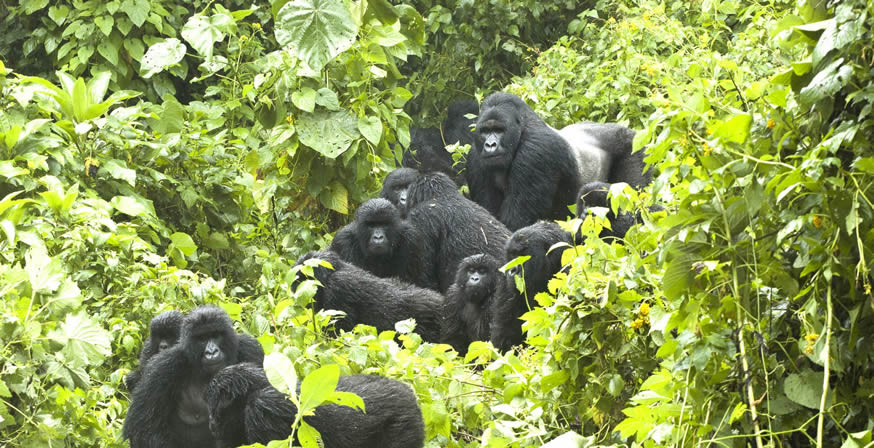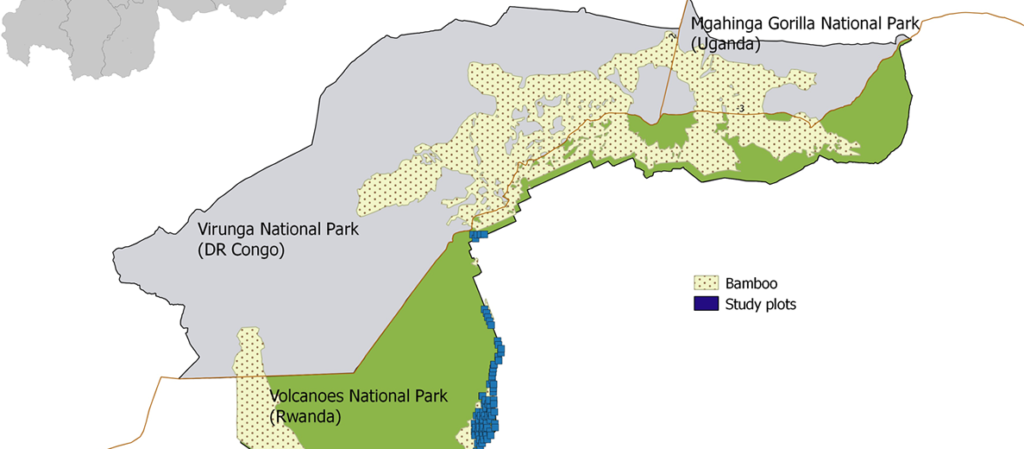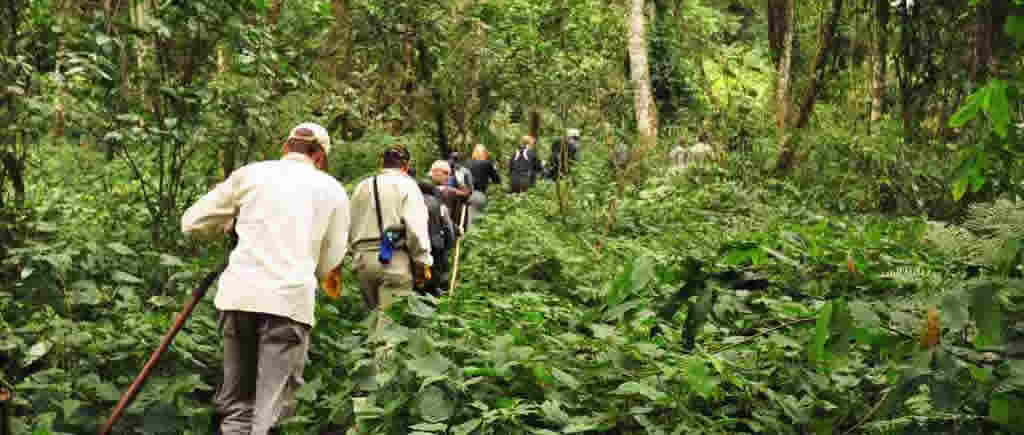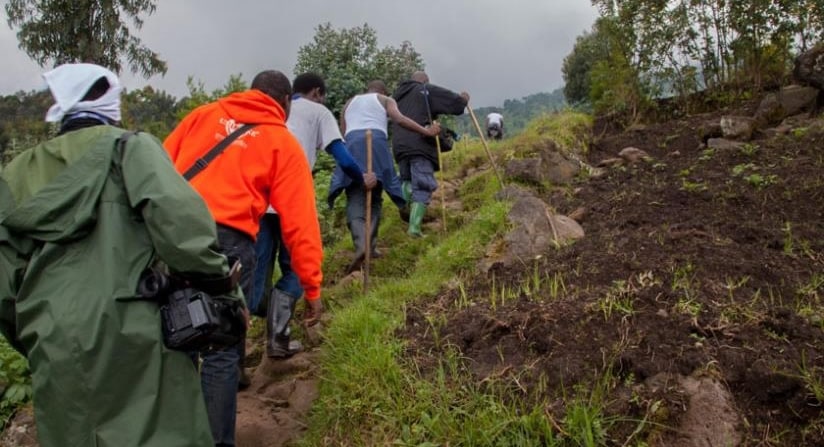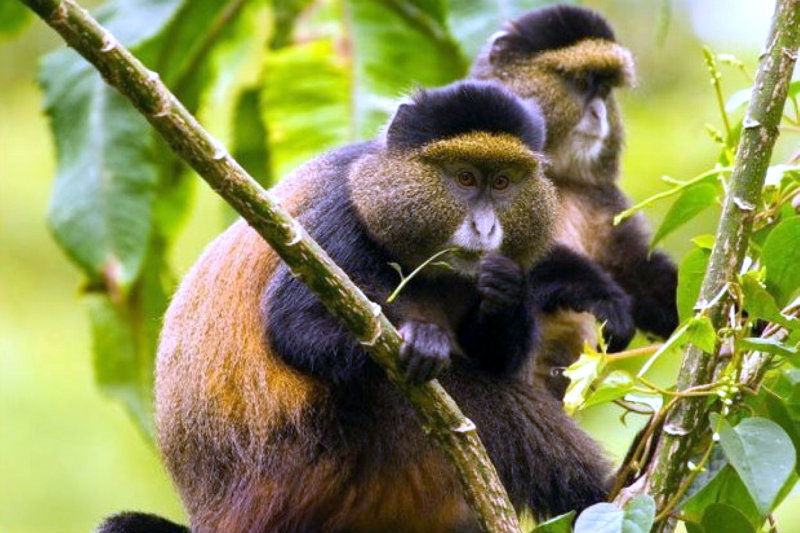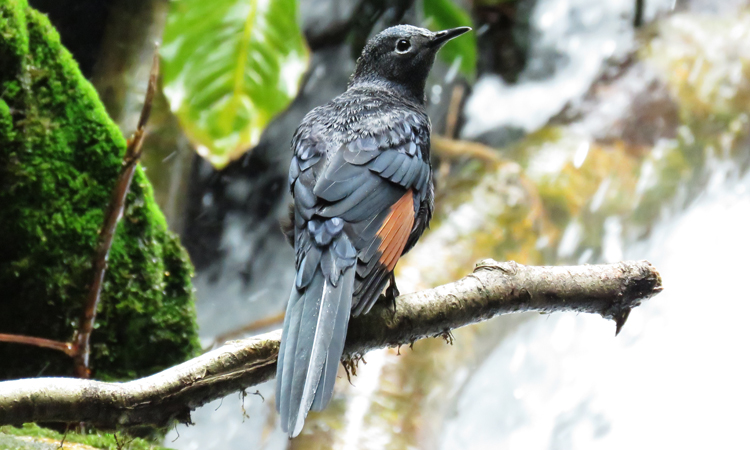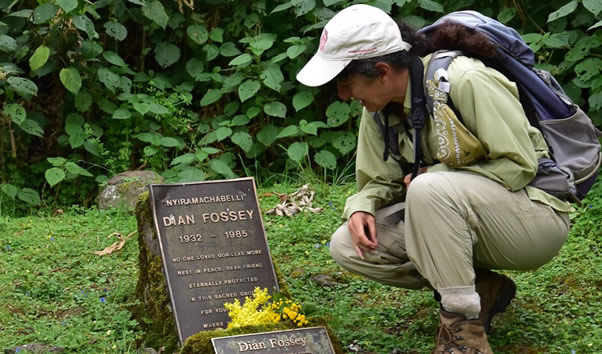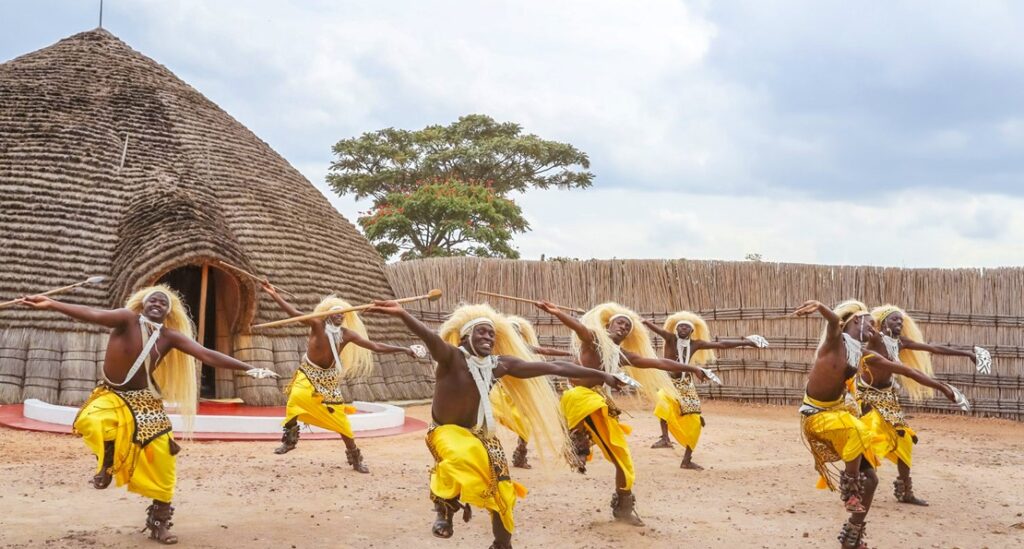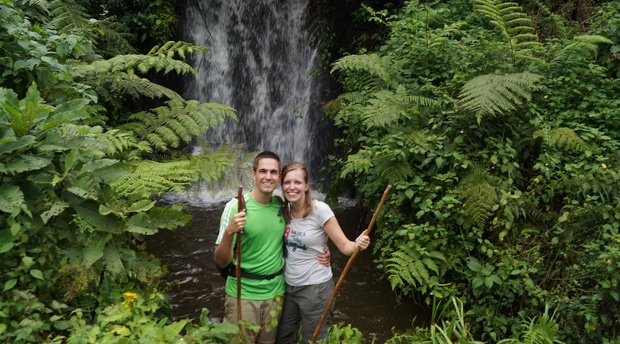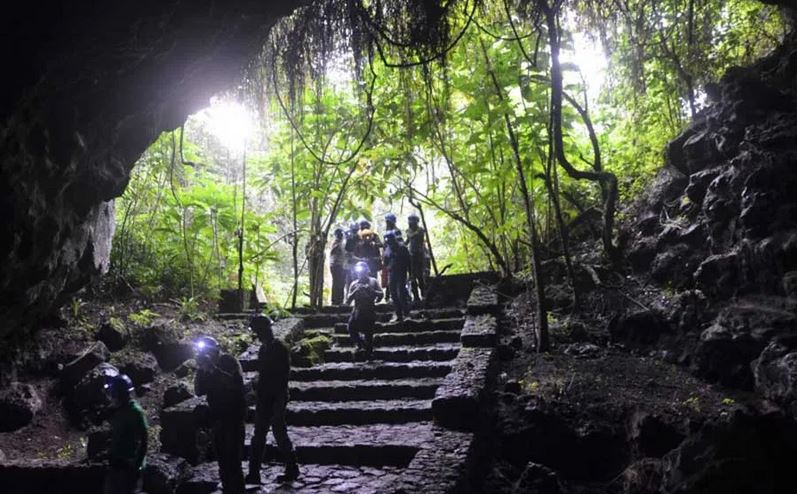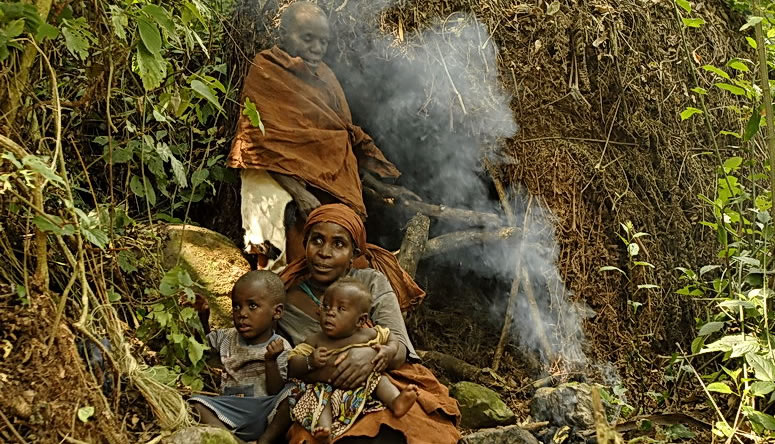Virunga National Park lies on the Eastern side of D.R. Congo and is home to over 200 gorillas living together in 8 gorilla families habituated for trekking. These are slightly fewer than the number of habituated groups in Rwanda and Uganda but the experience in Congo is exceptional in its own kind! Mountain gorillas stay in family units also referred to as troops or groups. Each family unit is headed by a mature male/dominant silverback. In the same family or group, there can be other blackbacks, silverbacks, females, and infants. The dominant silverback is the one who directs the group’s daily activities and protects the rest from enemies. Other than mountain gorillas, the park protects other primates such as Dent’s Mona monkeys, De Brazza’s monkeys, red-tailed monkeys, blue monkeys, red colobus, grey-cheeked mangabeys, olive baboons, black and white colobus monkeys, golden monkeys, chimpanzees; other mammals like lions, elephants, hippos, okapis, warthogs, etc. Virunga Park is one of Africa’s most biodiverse protected areas, protecting not only mountain gorillas but a range of other faunal species, flora, etc. This UNESCO Site expands up to 7800sq. km and it was established in 1925. The park also shelters over 706 bird species which makes it a haven for birders. Moreso, the park entails Mikeno volcano, Nyamuragira, and Nyiragongo making it also an ideal hiking destination.
Gorilla Families in Virunga Park
Kabirizi gorilla family
Kabirizi gorilla family members initially lived in the Zunguruka group and under the leadership of the Zunguruka silverback. He was succeeded by Ndungutse his son, who was killed in 1997 by poachers. Buhanga son of Ndungutse continued with leadership of the family and in 1998, Buhanga also died. Nsekuye took over till 2010 when she passed on. Regardless of the challenges, the Kabirizi gorilla group has increased in its membership and between 2013 and 2020, it had over 24 mountain gorillas.
Bageni gorilla family
Group origins, Bageni gorilla family takes its name from Bageni silverback. He turned silverback in 2010 but stayed with Kabirizi his father till 2013. Because of numerous confrontations between the two, Bageni created his own family and went away with about 20 mountain gorillas 8 of which were females including his own mother. He also went with Kanamahalagi silverback and other subadult males. In 2015, he interacted with his father and went with another female. In 2019, Bageni clashed with Willungunla and he took 2 adult females today, the group is comprised of over 36 mountain gorillas with 3 silverbacks.
Mapuwa group
 Mapuwa family originates from Rugendo group. Mapuwa left his father in 1995 together with Ruzirabwoba his brother. It took him about 3 years to become a dominant silverback and after engaging in clashes with Lulengo, he was able to go away with 2 adult females to begin his small group. In 1999, he initiated a fight with Kwitondo and Rugabo groups, where 4 mountain gorillas joined his family. Further expansion of its group was experienced from 2000 to 2009 when its membership increased to 15 members and this is after registering new births and more migrations from other groups.
Mapuwa family originates from Rugendo group. Mapuwa left his father in 1995 together with Ruzirabwoba his brother. It took him about 3 years to become a dominant silverback and after engaging in clashes with Lulengo, he was able to go away with 2 adult females to begin his small group. In 1999, he initiated a fight with Kwitondo and Rugabo groups, where 4 mountain gorillas joined his family. Further expansion of its group was experienced from 2000 to 2009 when its membership increased to 15 members and this is after registering new births and more migrations from other groups.
In 2017, Mapuwa became old and he lost his leadership to Mvuyekure. He was temporarily exiled and later returned as a subordinate silverback. Currently, this group is comprised of about 24 gorillas and they include 2 silverbacks.
Rugendo family
Rugendo family takes its name from Rugendo group. The group is currently led by Bukima silverback. This is one of the oldest gorilla families to undergo habituation in the Virunga National Park. It was habituated in Jomba sector in 1984 and its membership increased from 10 to 18 in 1998. It split into half in December 1998 when Rugendo clashed with Huma his son. Rugendo was unfortunately killed by rebels in the Bukima sector. Senkwekwe took over till 2007 when he and 5 more gorillas were killed. The group was left with no leader till 2008 when Bukima was seen leading the group. Currently, the group comprises 11 mountain gorillas.
Humba group
Humba is a calm family of 13 mountain gorillas, residing in the Bukima sector. It takes its name from the Humba silverback split from the Rugendo gorilla group in 1998 and went away with 6 gorillas. The group kept expanding from 1998 to 2009 following births and emigrations. In 2014, the Humba group experienced internal clashes between the silverback -Humba, and Nyakamwe leading to the creation of Nyakamwe. In 2015, Humba clashed with Munyaga and Kakule female joined the group. New births were recorded in 2014 and the group now has 13 members.
Nyakamwe gorilla family
Nyakamwe family consists of 14 members. The increase in its members was recorded after new births of about 6 babies from 2014 to 2020. The group was created in 2014 when it broke off from the Humba gorilla family. Nyakamwe silverback had continuous fights with Humba leading to its split.
Lulengo
Lulengo originates from the Rugabo group. Rugabo and 2 females were brutally killed during an attack that saw a young gorilla “Mvuyekure” kidnapped. Fortunately, the poachers were arrested and jailed, afterwards, Lulengo took over leadership of the 12 members. In 1998, he encountered several clashes with Mapuwa and some of its members left to join Mapuwa. In 2014, Lulengo clashed with Rugendo and Bagambe female gorilla joined the Lulengo family. From 2010 to 2020, the group increased its membership from 6 to 11.
Munyaga gorilla family
Munyaga family remained unhabituated till 1998. But the advantage about it is that researchers had interacted with it while it was still under Buhanga group. Munyaga has had several clashes leading decrease and increase in its group members. From 1998 to 2002, the group’s members decreased from 12 to 6 and this was due to clashes by other groups. Between 2007 and 2008, Munyaga disappeared completely when rebels occupied the area and the park rangers couldn’t trace him. Mawazo then took over leadership of the group and from 2010, the group has recorded about 5 births with 1 emigration.






